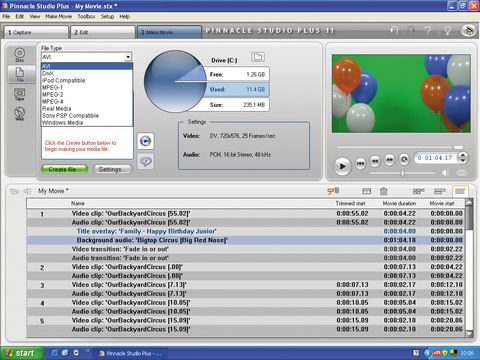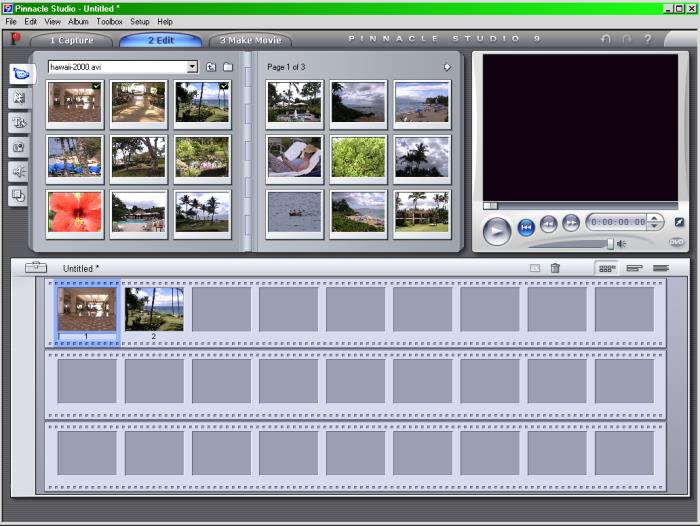

The Organize tab opens the Library view to organize the media elements for your production.

The two editors also include a compact version of the Library for easy access to assets while editing your video production in the Movie Editor or adding interactive menus in the Disc Editor. The major upgrade in this version is the move to 64-bit processing for better advanced editing performance with today’s high-def content. The Importer manages importing assets from files and storage media, analog and digital camcorders, digital cameras and discs. It also supports stop-motion capture and still image snapshots grabbed from video frames. The Exporter can create a movie file, including for portable devices, burn a disc or disc image to burn later or copy to a memory card, or upload directly to a Cloud site including Facebook, YouTube and Vimeo, making sharing your video with friends across the web simple. You can select a preset output format in the settings panel, or select your own advanced options. Studio also conveniently provides the option to output only a selected portion of the timeline.

The Library has a navigator tree view down the left side to access your projects, media (video, audio and photos), content (including effects and titles) and collections. You then can browse and preview these elements in the main browser window, rate and tag them for more effective search and filtering, and group and organize them into collections. The Library also supports watchfolders, which monitor specified folders and automatically import new files.ĭouble-clicking on elements in the Library or in the editors then opens the associated media editor in a separate window, for editing and applying corrections to specific types of media or assets. You can apply corrections to assets before including them in your production or adjust them once they are on the timeline.


 0 kommentar(er)
0 kommentar(er)
